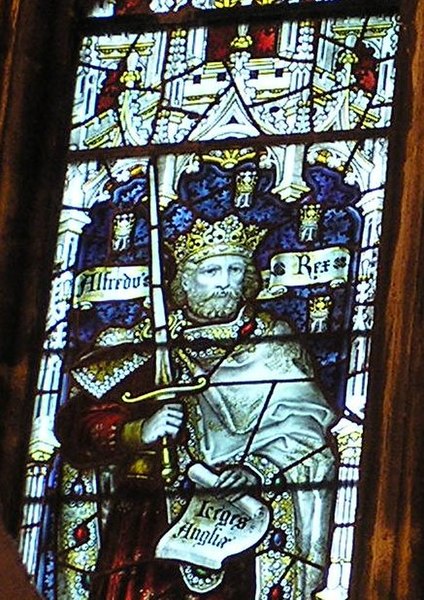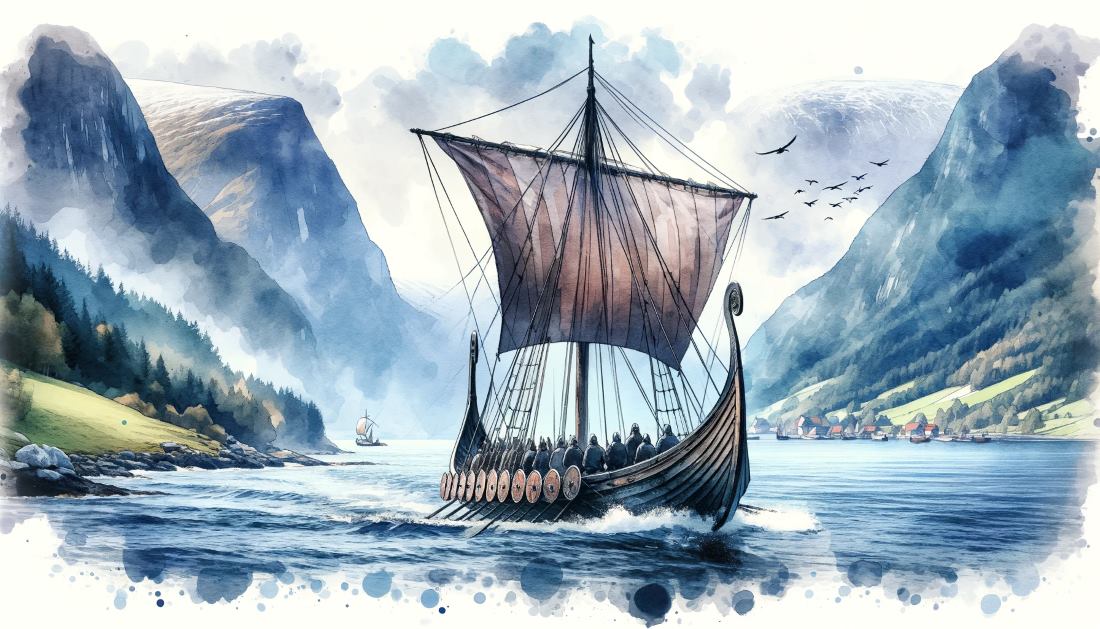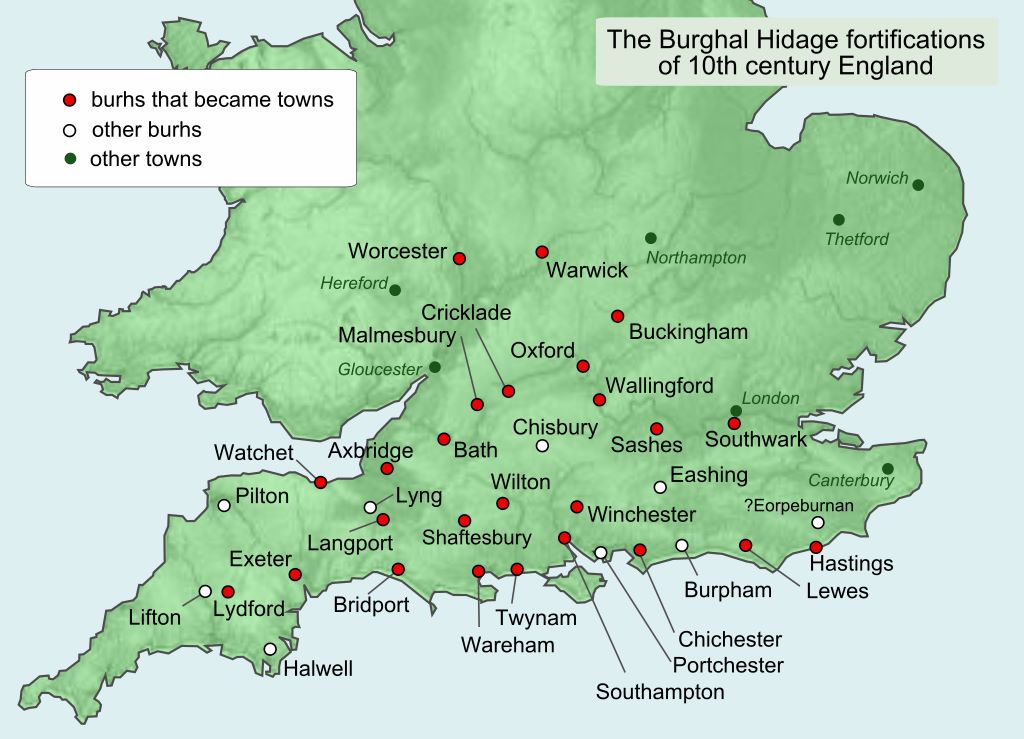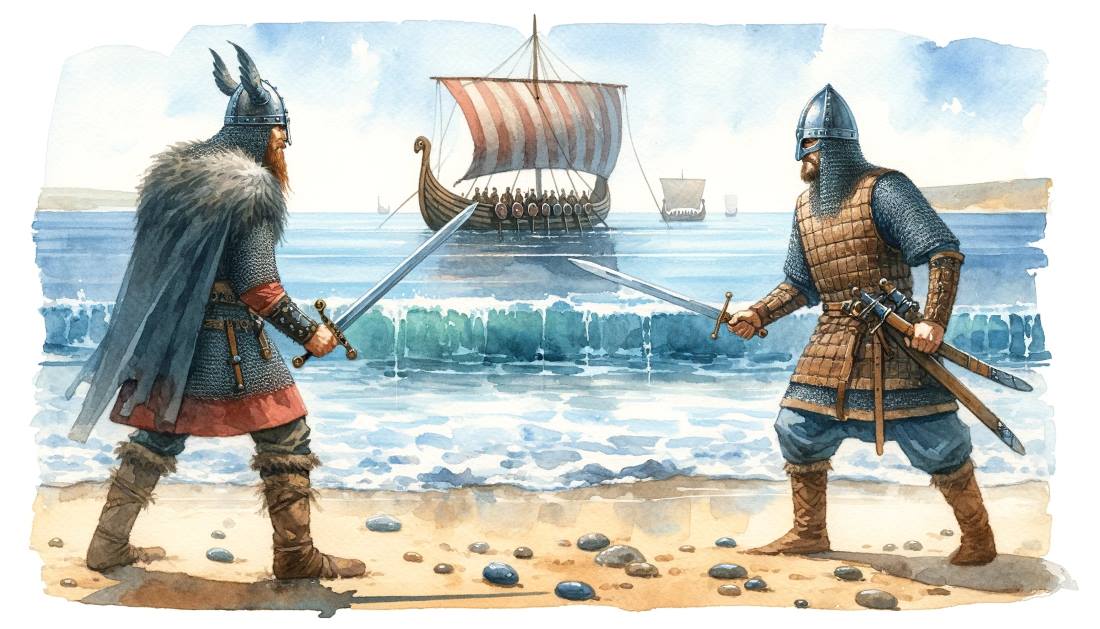Alfred the Great is a renowned figure in English history, not solely for his military victories but also for his significant contributions to the cultural and judicial development of his kingdom. His epithet, ‘the Great’, reflects a legacy that extends beyond the battlefield, encompassing his efforts in promoting education, legal reform, and the advancement of Christian values. However, it is his strategic prowess in halting the Viking incursions and defending his realm that stands as his most celebrated achievement. This blog post will primarily focus on this aspect of his reign, exploring how Alfred effectively stemmed the tide of Viking aggression and secured the safety and stability of his kingdom. Through this examination, we aim to shed light on the enduring impact of Alfred’s leadership and strategic acumen in shaping the course of English history.
Alfred the Great
Born around 849 in Wantage, Berkshire, Alfred the Great was the youngest son of King Aethelwulf of Wessex and his wife Osburh. His early years were overshadowed by the reigns of his elder brothers – Aethelbald, Aethelberht, and Aethelred. Alfred’s rise to prominence was not foreseen as he was the youngest, with little expectation of ascending to the throne. Despite this, his upbringing was steeped in the rich traditions of the Wessex royal court, which fostered in him a keen interest in arts, culture, and learning. This foundation would later play a crucial role in his reign as a reformer and educator.

Alfred’s path to kingship was marked by the turbulent times of Viking invasions and internal family dynamics. After the deaths of his elder brothers, Alfred found himself at the forefront of Wessex’s leadership. His brother Aethelred’s demise following the Battle of Merton in 871 thrust Alfred into the position of king at a time when the kingdom was under severe threat from Danish Viking forces. This period was critical in shaping his future policies and military strategies. As the new ruler, Alfred faced the challenge of defending his kingdom against these relentless invasions, setting the stage for his renowned military and diplomatic feats.
Alfred’s Early Encounters with the Vikings
Alfred’s initial encounters with the Vikings were marked by challenges and learning experiences that would shape his future strategies as a ruler. Early in his reign, Alfred grappled with the Viking threat, which had been a persistent issue for Wessex. To secure his kingdom, Alfred made a strategic decision to buy peace from the Vikings. This peace, however, lasted only five years, a period during which Alfred perhaps underestimated the Viking threat. This miscalculation meant that sufficient preparations and fortifications against future Viking incursions were not made, leaving Wessex vulnerable.

The year 878 proved to be a turning point in Alfred’s rule and his understanding of the Viking menace. Caught off-guard by a surprise Viking attack, Alfred was forced to flee and take refuge in the Somerset marshes at Athelney. This moment of crisis, however, also marked the beginning of his significant rise as a strategic and resilient leader. From Athelney, Alfred began to rally local forces, engaging in guerrilla warfare against the Vikings. This period was pivotal in transforming Alfred from a ruler who once bought peace into a more proactive leader, who recognized the need for a well-prepared and strategic defense against the Viking incursions. This shift in approach would lay the groundwork for his later successes and reputation as a formidable opponent to the Viking invaders.
Alfred the Conqueror of the Vikings
Alfred’s transformation from a defensive ruler to a proactive leader against the Vikings began with his guerrilla resistance from Athelney. This period of strategic retreat and regrouping allowed him to gather strength and plan his counterattacks more effectively. His persistence and tactical acumen came to fruition in 878, when he successfully defeated the Viking leader Guthrum at the Battle of Edington. This victory was not just a military triumph; it also had significant cultural and political implications. Alfred’s terms of peace included Guthrum’s acceptance of Christianity, symbolizing a shift in the power dynamics between the Saxons and the Vikings. This event marked a turning point in Alfred’s reign, showcasing his ability to blend military prowess with diplomatic skill.

In the aftermath of his victory, Alfred embarked on a comprehensive program to fortify his kingdom. He recognized the need for a robust defense system to protect Wessex from future invasions. This led to the construction of a network of fortified towns, known as burhs. These fortifications played a crucial role in safeguarding the kingdom and were a testament to Alfred’s foresight in military planning. The Burghal Hidage, a system he implemented, effectively mobilized about 27,000 men for the kingdom’s defense. This system proved to be a formidable barrier against Viking invasions, particularly during the significant assault in 892. The effectiveness of Alfred’s defensive strategies was evident in the resilience shown by these fortifications, which provided a solid line of defense against the Vikings.

Alfred also understood the importance of naval power in countering Viking threats. He invested in the construction of ships and the development of a royal navy, which was a relatively new concept for the Anglo-Saxons at the time. This foresight was vindicated in 882, when Alfred’s navy achieved a significant victory over the Vikings at sea, capturing two of their ships. This naval capability added a crucial dimension to his defensive strategy, allowing him to challenge Viking dominance not just on land but also at sea. The systems and structures Alfred established laid the foundations for the future success of Wessex kings. His innovations in military and naval defense, combined with his diplomatic and cultural reforms, paved the way for the eventual unification of England under the leadership of Wessex.
Alfred’s Character and Legacy
Alfred the Great’s character is vividly captured in Asser’s “Life of King Alfred,” where he is described as a leader of exceptional qualities. Asser notes, “He was superior to all of his brothers… both in wisdom and in all good habits, and because he was warlike beyond measure and victorious in almost all battles.” This portrayal underscores Alfred’s wisdom, virtuous conduct, and unparalleled military skills. His reign was characterized not only by his triumphs in battle but also by his commitment to the intellectual and spiritual growth of his kingdom.

Alfred’s death on October 26, 899, marked the end of a significant era in English history. He was succeeded by his son, leaving behind a legacy shaped by his profound impact on England. Asser’s writings capture the essence of Alfred as a transformative leader, stating, “He overthrew the pagans with great slaughter, smiting the fugitives, and he pursued them as far as the fortress.” These words reflect the depth of Alfred’s commitment to his realm and his effectiveness as a ruler. His remarkable journey from a young prince to a revered king is a testament to his enduring influence on English history.
Historical Challenge: Can You Conquer the Past?
Answer more than 18 questions correctly, and you will win a copy of History Chronicles Magazine Vol 1! Take our interactive history quiz now and put your knowledge to the test!

